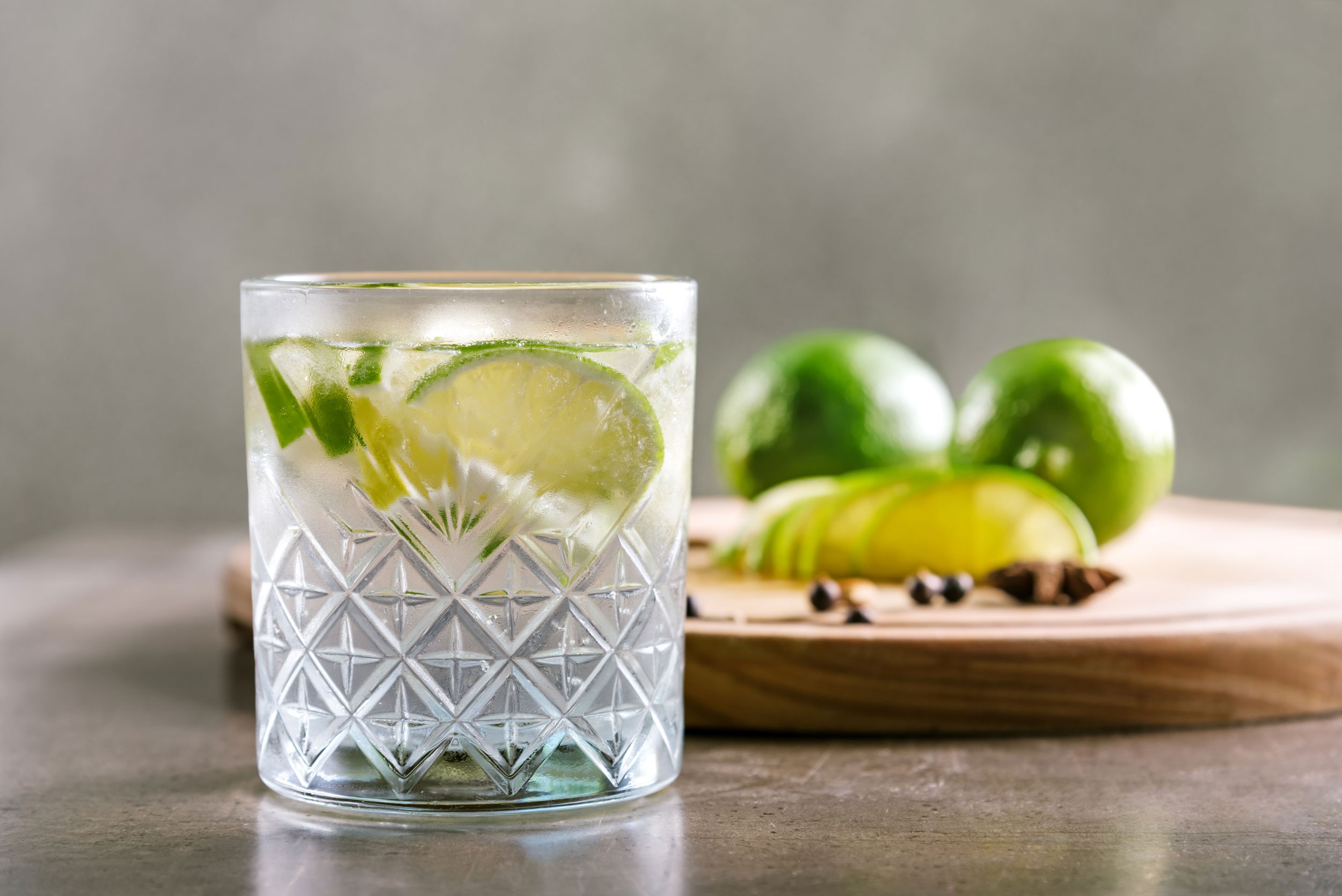Gin
Gin, a distilled alcoholic beverage, is renowned for its predominant juniper berry flavouring. Originating from Europe, this spirit has since garnered a global following. In culinary arts, gin is not only a beloved drink but also an intriguing ingredient. Alberta, with its rich history and innovative spirit, has its unique tales to tell in the world of gin.

About
Derived from the Dutch drink "jenever," gin evolved in Britain during the early 17th century. It is primarily made from distilled grain alcohol and flavoured with botanicals, with juniper berries being the most dominant. While juniper gives gin its distinctive taste, other botanicals such as coriander, citrus peels, and angelica root contribute to its complex flavour profile. Modern gins often include a diverse array of botanicals, leading to a wide variety of flavour nuances. Alberta, known for its quality grains, provides an excellent base for gin production, with local distilleries crafting some standout spirits.
History
While gin's origins are European, its introduction to Canada, including Alberta, came with British settlers and traders. During the Prohibition era in the early 20th century, illegal gin production and sales surged, echoing trends seen in the USA. Post-Prohibition, Alberta saw a rise in legal distilleries, producing and selling gin among other spirits. In recent years, the craft distillery movement has taken hold in Alberta, leading to innovative and artisanal gins that reflect the province's unique terroir and the creativity of its distillers.
Ways To Cook
Gin is a staple in numerous classic cocktails, from the dry martini to the refreshing gin and tonic. Its herbaceous and often citrusy notes make it a favourite for mixologists crafting inventive drinks. Beyond beverages, gin's botanical flavours make it a fascinating culinary ingredient. It can be used in marinades for meats, especially game, lending a unique flavour profile.
Gin-infused desserts, like gin and tonic sorbets or gin-soaked berries, are delightful treats. Alberta's local gins, with their distinct botanical blends, offer chefs and home cooks an exciting local twist for both traditional and contemporary dishes.
Some Of Our Favourite Videos
Alberta Gin Producers
Pivot Spirits
About this producerFoods from this producer:
Troubled Monk
About this producerFoods from this producer:
Eau Claire Distillery
About this producerFoods from this producer:
